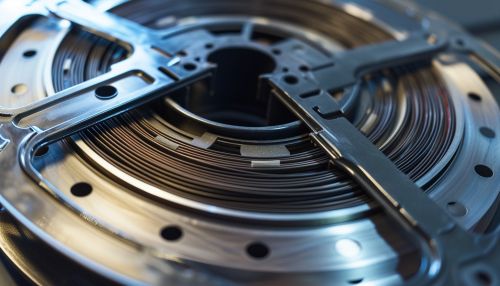Magnetic Tape
Introduction
Magnetic tape is a medium for magnetic recording, made of a thin, magnetizable coating on a long, narrow strip of plastic film. It was developed in Germany in 1928, based on magnetic wire recording. Devices that record and playback audio and video using magnetic tape are tape recorders and video tape recorders respectively. A device that stores computer data on magnetic tape is known as a tape drive.


History
Magnetic tape was first invented for recording sound by Fritz Pfleumer in 1928 in Germany, following the invention of magnetic wire recording by Valdemar Poulsen in 1898. Pfleumer's invention used a ferric oxide (Fe2O3) powder coating on a long strip of paper. This invention was further developed by the German electronics company AEG, which manufactured the recording machines and BASF, which manufactured the tape.
Physical Composition
Magnetic tape is most commonly packaged in cartridges and cassettes, such as the widely used Compact Cassette, and the more compact microcassette. The tape is coated on one side with a magnetic material that can be magnetized to represent data. The opposite side of the tape is often coated with a thin layer of a non-magnetic material, often carbon black, to prevent friction with the playback head.
Data Storage
Magnetic tape data storage is a system for storing digital information on magnetic tape using digital recording. Modern magnetic tape is most commonly packaged in cartridges and cassettes. The device that performs the writing or reading of data is a tape drive. Autoloaders and tape libraries are often used to automate cartridge handling and exchange.
Advantages and Disadvantages
Magnetic tape has both advantages and disadvantages depending on the specific use case. It has long archival stability, and a well-maintained tape can last up to 30 years. The storage density of magnetic tape is very high, and it is also quite cost-effective for large volumes of data. On the downside, the sequential access method results in slow data rates, and tape can be easily damaged if mishandled or exposed to magnetic fields.
Modern Usage
In many large computer systems, magnetic tape drives are still used as a backup medium, due to their high capacity and low cost. In recent years, magnetic tape has also seen applications in the entertainment industry, with some artists releasing new albums on cassette tape.
